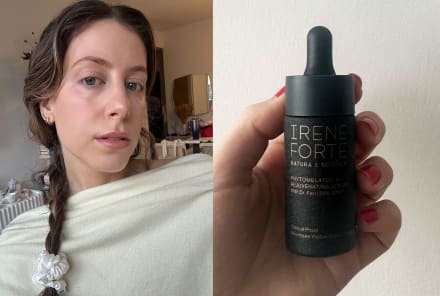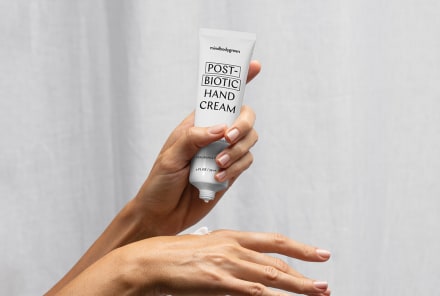Advertisement
Root Rot 101: How To Prevent, Identify & Treat The Houseplant Issue

Some houseplant issues are easy to solve for: Plant not getting enough water? Give it a good soak, and it should perk right up. Notice your greenery has outgrown its pot? Transfer it to a larger one, and it can bounce back in no time.
Root rot, on the other hand, is one problem that isn't as easy to recover from—which makes early detection essential. Here are some pro tips on spotting, treating, and preventing this leading cause of houseplant death.
What is root rot?
Root rot is a relatively common houseplant disease that's usually caused by a bacterial or fungal infection. These pathogens thrive in wet soil and eventually cause a plant's roots to suffocate. Roots can also rot when they are exposed to overly moist conditions for too long.
The roots are like the engine of a plant: They keep things running and fuel all the foliage you see above the surface. So when they die off, the rest of the plant tends to do the same.
"Plants need oxygen to photosynthesize and to convert food into energy," Debbie Neese, a horticulture expert at Lively Root, explains to mbg. "If oxygen isn't present around the root system, the root cells aren't able to produce a key molecule for saving and transporting energy in cells. The roots start to die and disable nutrient uptake, which then leads to plant death."
What does it look like?
Neese says that yellow and black leaves are one indication of potential rot. These discolored leaves might also look dry and shriveled, despite regular watering.
If small fungus gnats have settled around your plant, it's another bad sign. "That indicates that the soil is too moist and could show some further root issues if steps aren't taken immediately," Neese says.
The last clue to look out for—or rather, to smell for—is a sour, rotting eggy odor emanating from your plant.
If you notice any of these signs, it's time to take your plant out of its pot and analyze its roots up close. "If the roots are brown or black and soft or mushy instead of a healthy, creamy white, it indicates root rot," says Neese. Once you diagnose root rot, it's time to do some damage control.
What causes it?
There are a few reasons your plant's roots might be in jeopardy. Here are three causes of root rot:
- Overwatering: This is far and away the most common cause of root rot. Different types of plants have different water needs. If you water yours too frequently or heavily, its soil will get oversaturated and become a breeding ground for fungi and bacteria. Here are some telltale signs that you're overwatering, and here's a guide on how to tell how much water your plant actually needs.
- Poor drainage: This one is related to overwatering. If your plant's pot doesn't have a drainage hole, excess water won't be able to escape from it, leading to overly moist soil. While adding small rocks and pebbles to the bottom of a closed pot can increase aeration slightly, most experts recommend avoiding pots that don't have holes altogether.
- Underwatering: In some cases, not watering your plant enough can eventually lead to root rot too. Roots begin to shrink and shrivel when their soil is too dry. If you forget to water your plant for a while and then flood it with moisture, it can shock the now-fragile root system.
Can a plant recover from root rot?
Some plants can recover from root rot; it really depends on how much of the root system has been damaged. Once you lift your plant out of its pot and assess its roots, see if there are any that still look light in color and are thick enough to withstand some pressure. If your plant still has some intact roots throughout, it might be salvageable.
Here's Neese's procedure for saving plants that have root rot:
- Take sterilized pruners and remove all the brown or black rotting roots.
- Keep dipping your pruners into a solution of 1 part bleach or another disinfectant to 3 parts water as you prune so as not to spread the fungus to the healthy roots.
- After removing all the unhealthy roots, wash the roots under tepid water to remove any fungus or jellylike material from the roots.
- Then remove any yellow or blackened leaves.
- Replant what's left in a sterilized container with proper drainage. Use fresh potting soil that is well-draining and an appropriate mix for your particular plant.
If your plant doesn't have enough intact roots to make transplanting worth it, not all hope is lost! You still might be able to grow a new plant from one of its healthy stems or leaf cuttings. Here's an introduction to that propagation process.
How to prevent root rot moving forward.
Since root rot is usually caused by excess moisture, proper watering is the best form of prevention.
If you're prone to overwatering, Neese says that using a moisture meter might help you break the habit. These small, inexpensive gadgets are the plant world's version of a meat thermometer: You stick them in soil to gauge whether or not it's ready to be watered.
Making sure that your plant has proper drainage is also key. If you have a decorative pot that doesn't have a hole in it, drill one yourself, or place your plant in a smaller plastic pot that does have a hole, and nestle that pot into the larger decorative one.
The bottom line.
Root rot harms houseplants' root systems, and it usually happens in soil that's too moist. While it's a major cause of plant death, it is treatable if you catch it early enough. Monitor your plants for discolored leaves, fungus gnats, and gnarly smells to catch this disease before it totally takes over your plant.
Watch Next
Enjoy some of our favorite clips from classes
Enjoy some of our favorite clips from classes
What Is Meditation?
Mindfulness/Spirituality | Light Watkins
Box Breathing
Mindfulness/Spirituality | Gwen Dittmar
What Breathwork Can Address
Mindfulness/Spirituality | Gwen Dittmar
The 8 Limbs of Yoga - What is Asana?
Yoga | Caley Alyssa
Two Standing Postures to Open Up Tight Hips
Yoga | Caley Alyssa
How Plants Can Optimize Athletic Performance
Nutrition | Rich Roll
What to Eat Before a Workout
Nutrition | Rich Roll
How Ayurveda Helps Us Navigate Modern Life
Nutrition | Sahara Rose
Messages About Love & Relationships
Love & Relationships | Esther Perel
Love Languages
Love & Relationships | Esther Perel

















